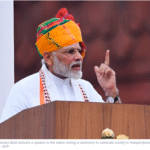In a historic achievement, India has successfully concluded the mission of its moon rover, Pragyan, making it the first craft to reach the lunar south pole. The Indian Space Research Organisation (ISRO) announced that Pragyan has been placed in “sleep mode” after completing its two-week assignment conducting crucial experiments. However, with charged batteries and a receiver still operational, hopes remain for its potential reawakening to tackle further assignments in the future.
ISRO expressed optimism for the possibility of a successful revival, stating, “Hoping for a successful awakening for another set of assignments! Otherwise, it will forever stay there as India’s lunar ambassador.” The rover’s extraordinary journey to the moon’s rugged south pole marked a significant milestone, propelling India into an elite group that includes the United States, China, and the former Soviet Union.
Chandrayaan-3 Mission:
The Rover completed its assignments.It is now safely parked and set into Sleep mode.
APXS and LIBS payloads are turned off.
Data from these payloads is transmitted to the Earth via the Lander.Currently, the battery is fully charged.
The solar panel is…— ISRO (@isro) September 2, 2023
India’s achievement came shortly after Russia’s Luna-25 mission faced a setback when it crashed during a similar lunar landing attempt. The successful touchdown of Chandrayaan-3’s rover in the south pole region in contrast sparked widespread jubilation in India, with the media hailing it as the nation’s most significant scientific accomplishment.
During its mission, Pragyan covered a distance of over 100 meters (330 feet) on the moon’s surface, conducting critical analyses that confirmed the presence of essential elements such as sulfur, iron, and oxygen. These findings contribute valuable insights to our understanding of the moon’s composition and geological history.
While celebrating this lunar triumph, India has set its sights on another ambitious space endeavor. On Saturday, India launched a probe designed to study the sun, specifically focusing on observing solar winds that can have a disruptive impact on Earth’s magnetic field and are commonly visible as auroras.
ISRO confirmed the successful launch and health status of the satellite, which is currently in Earth’s orbit, as it gears up for its remarkable journey covering a distance of 1.5 million kilometers (930,000 miles). This solar exploration mission holds the promise of enhancing our comprehension of the sun’s behavior and its potential influence on Earth’s space weather.
As India continues to make strides in space exploration, these achievements underscore the nation’s commitment to advancing scientific knowledge, technology, and innovation on a global scale. The successful lunar mission of Pragyan and the upcoming solar exploration probe exemplify India’s growing role in the international space community and its dedication to expanding the boundaries of human understanding.














